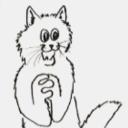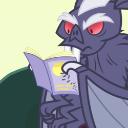Yahoo Answers is shutting down on May 4th, 2021 (Eastern Time) and beginning April 20th, 2021 (Eastern Time) the Yahoo Answers website will be in read-only mode. There will be no changes to other Yahoo properties or services, or your Yahoo account. You can find more information about the Yahoo Answers shutdown and how to download your data on this help page.
Trending News
What period in history did the "dark & stormy-night" trope become popular in Gothic-Horror Fiction?
I know it's most commonly associated with 19th Century Victorian-Era Gothic-Fiction (E.G. Dr Jekyl & Mr. Hyde, Frankenstein, Dracula) and than continued in old horror-films of the 1950s, 60s ,70s and onwards.
But was the 19th century unique in that it started that "dark & stormy night" trope or is it just most known for it?
4 Answers
- Elaine MLv 71 year ago
Mostly because the Charlie Brown cartoon strip used it a lot with Snoopy writing his novel.
- TinaLv 71 year ago
It isn't particularly popular in Gothic fiction. It was used by Edward Bulwer-Lytton to begin his 1830 novel Paul Clifford and I do not know why it was chosen as a typical piece of purple prose - it isn't really purple, nor especially Gothic. Neither can it be considered typical of, for instance, Mary Shelley's 'Frankenstein' which begins quite soberly with a line from a letter:
"You will rejoice to hear that no disaster has accompanied the commencement of an enterprise which you have regarded with such evil foreboding"
The thunder and lightening which accompanies the revival of the Monster is from the film, not the book. There is a storm in 'Dracula' which heralds the arrival of Dracula at Whitby in the storm-driven ship, the Demeter, but I can't say I remember one in 'Dr Jekyll and Mr Hyde.'
Interestingly the film version of 'Oliver Twist' begins with a dark and stormy night in which Oliver's mother struggles with the elements to find her way to the workhouse, but the book doesn't - it starts with Dickens setting the scene:
"Among other public buildings in a certain town, which for many reasons it will be prudent to refrain from mentioning, and to which I will assign no fictitious name, there is one anciently common to most towns, great or small: to wit, a workhouse;"
and moves to a small room where, attended by a drunken nurse and an indifferent parish surgeon, Oliver is born and his mother quietly dies.
I think the the trope is far more a cinematic than a fictional one.
- MarkLv 71 year ago
It was the 19th century. Writers (even good ones) thought that was the best way to inspire dread. Believe it or not, writers in the 16th century tended to be more like us, literature-wise, and freaked out more about ghosts and witches.







